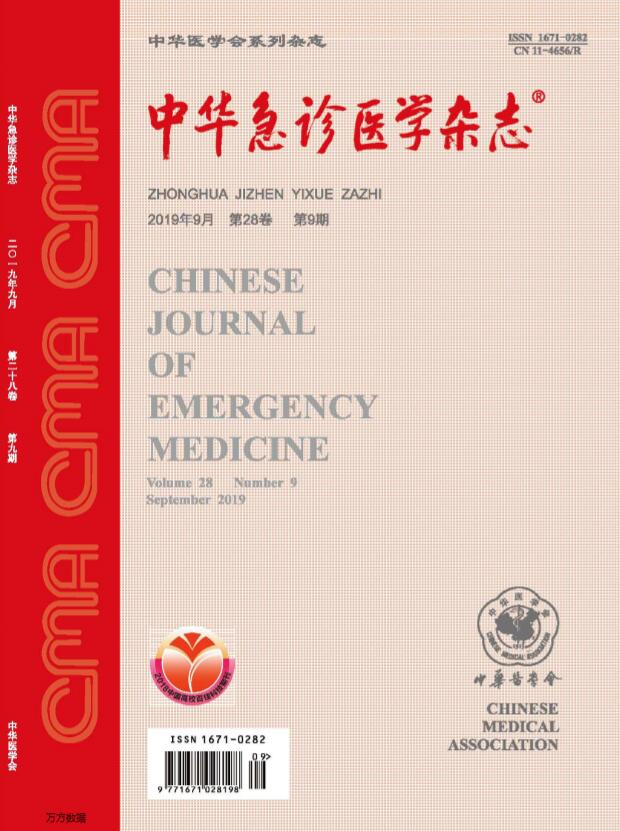Protective effect of luteolin on acute lung injury in sepsis mice
Q4 Nursing
引用次数: 0
Abstract
Objective To investigate the potential therapeutic effect of luteolin on sepsis-induced ALI and the underlying mechanisms. Methods Total of 50 mice were randomly(random number) divided into five groups: a sham control group, a sepsis-induced ALI group, and three sepsis groups pre-treated with 20, 40, and 80 mg/kg body weight luteolin. Mice in the treatment groups were pre-treated with luteolin at the respective oral dose two days before ALI induction. The lungs were isolated for histopathological examinations, and the bronchoalveolar lavage fluid (BALF) was collected for biochemical analyses. Results Luteolin significantly attenuated sepsis-induced ALI. Additionally, luteolin treatment decreased protein and inflammatory cytokine concentration and the number of infiltrated inflammatory cells in BALF compared with that in the non-treated sepsis mice. Pulmonary myeloperoxidase (MPO) activity was lower in the luteolin-pre-treated sepsis groups than in the sepsis group. The mechanism underlying the protective effect of luteolin on sepsis is related to the up-regulation of certain antioxidation genes, including inducible nitric oxide synthase (iNOS), cyclooxygenase-2 (COX-2), superoxide dismutases (SODs), and heme oxygenase 1 (HO-1), and the reduction of inflammatory responses through blockage of the activation of the nuclear factor (NF)-κB pathway. Conclusions Luteolin pre-treatment inhibits sepsis-induced ALI through its anti-inflammatory and antioxidative activity, suggesting that luteolin may be a potential therapeutic agent for sepsis-induced ALI. Key words: Luteolin; Sepsis; COX-2; SODs; iNOS木犀草素对脓毒症小鼠急性肺损伤的保护作用
目的探讨木犀草素对脓毒症所致急性肺损伤的潜在治疗作用及其机制。方法将50只小鼠随机分为5组:假对照组、败血症诱导的ALI组和用20、40和80mg/kg体重的木犀草素预处理的三个败血症组。治疗组中的小鼠在ALI诱导前两天分别用口服剂量的木犀草素预处理。分离肺部进行组织病理学检查,收集支气管肺泡灌洗液(BALF)进行生化分析。结果木犀草素能显著减轻脓毒症引起的ALI。此外,与未经治疗的败血症小鼠相比,木犀草素治疗降低了BALF中的蛋白质和炎症细胞因子浓度以及浸润的炎症细胞数量。木犀草素预处理败血症组的肺髓过氧化物酶(MPO)活性低于败血症组。木犀草素对败血症保护作用的机制与某些抗氧化基因的上调有关,包括诱导型一氧化氮合酶(iNOS)、环氧合酶-2(COX-2)、超氧化物歧化酶(SODs)和血红素加氧酶1(HO-1),以及通过阻断核因子(NF)-κB通路的激活来减少炎症反应。结论木犀草素预处理通过其抗炎和抗氧化活性抑制败血症诱导的ALI,表明木犀草蛋白可能是一种潜在的治疗败血症诱导的ALI的药物。关键词:木犀草素;脓毒症;COX-2;SOD;iNOS
本文章由计算机程序翻译,如有差异,请以英文原文为准。
求助全文
约1分钟内获得全文
求助全文
来源期刊

中华急诊医学杂志
Nursing-Emergency Nursing
CiteScore
0.10
自引率
0.00%
发文量
8629
期刊介绍:
Chinese Journal of Emergency Medicine is the only national journal which represents the development of emergency medicine in China. The journal is supervised by China Association of Science and Technology, sponsored by Chinese Medical Association, and co-sponsored by Zhejiang University. The journal publishes original research articles dealing with all aspects of clinical practice and research in emergency medicine. The columns include Pre-Hospital Rescue, Emergency Care, Trauma, Resuscitation, Poisoning, Disaster Medicine, Continuing Education, etc. It has a wide coverage in China, and builds up communication with Hong Kong, Macao, Taiwan and international emergency medicine circles.
 求助内容:
求助内容: 应助结果提醒方式:
应助结果提醒方式:


